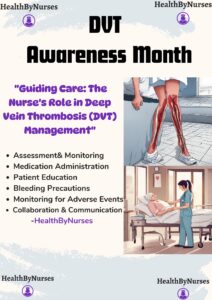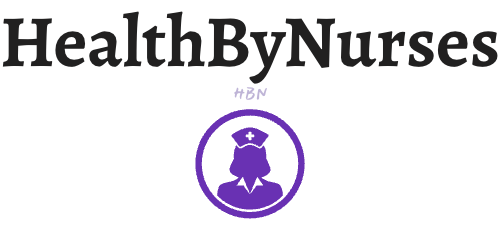Nurses play a crucial role in ensuring safe and effective treatment when a patient is on anticoagulant therapy. Let’s first understand how anticoagulants work. Anticoagulants are medications that work to prevent blood from clotting.
Anticoagulants function by targeting specific factors in the blood clotting cascade. For instance, they may inhibit the action of clotting factors like thrombin or factor Xa, which are essential for forming fibrin, a protein that helps in blood clot formation. By interfering with these clotting factors, anticoagulants help to maintain blood flow and prevent the formation of abnormal clots within blood vessels.
- Heparin: This is often given intravenously in a hospital setting for immediate anticoagulation. It works by enhancing the activity of antithrombin III, a natural anticoagulant in the body, thereby inhibiting the action of clotting factors.
- Low Molecular Weight Heparin (LMWH): LMWHs, such as enoxaparin and dalteparin, are similar to heparin but have a more predictable dose response and longer half-life. Also used for the prevention and treatment of pulmonary embolism (PE).
- Warfarin: This oral anticoagulant works by inhibiting the synthesis of vitamin K-dependent clotting factors in the liver. It is commonly used for long-term anticoagulation in conditions such as atrial fibrillation, DVT, and PE.
- Direct Oral Anticoagulants (DOACs): These newer oral anticoagulants, including dabigatran, rivaroxaban, apixaban, and edoxaban, directly inhibit specific clotting factors, such as thrombin or factor Xa. They offer convenience in dosing and monitoring compared to warfarin.
Anticoagulants are crucial for preventing and treating blood clot-related conditions, but they also carry the risk of bleeding complications. Therefore, their use requires careful monitoring, dose adjustments, and patient education to ensure optimal outcomes while minimizing risks. Close collaboration between interprofessional teams is essential to ensure safe and effective anticoagulant therapy for patients.
Here are some key responsibilities of nurses when caring for patients on anticoagulants:

- Assessment and Monitoring:
- Conduct a comprehensive assessment of the patient’s medical history, including any previous thrombotic events, bleeding disorders, or other medical conditions.
- Monitor vital signs and assess for signs of bleeding, such as petechiae, ecchymosis, or bleeding from mucous membranes.
- Perform regular physical assessments, including checking for signs of DVT or PE, such as swelling, redness, tenderness, or shortness of breath.
- Medication Administration:
- Administer anticoagulant medications as prescribed by the healthcare provider, ensuring accurate dosage and timing.
- Educate patients about their anticoagulant medications, including the purpose of the medication, potential side effects, and the importance of adherence to the prescribed regimen.
- Monitor laboratory values, such as PT/INR for patients on warfarin or aPTT for patients on heparin, and adjust medication dosages as needed based on therapeutic ranges.
- Patient Education:
- Provide thorough education to patients and their families about anticoagulant therapy, including potential risks and benefits, signs of bleeding or clotting complications, and strategies to minimize the risk of adverse events.
- Teach patients about dietary considerations, medication interactions, and lifestyle modifications that may affect anticoagulant therapy, such as avoiding certain foods high in vitamin K or engaging in activities that increase the risk of bleeding.
- Bleeding Precautions:
- Implement bleeding precautions for patients on anticoagulant therapy, such as using soft-bristled toothbrushes, electric razors for shaving, and avoiding activities that increase the risk of injury.
- Guide how to minimize the risk of bleeding during activities of daily living, such as using caution when handling sharp objects or participating in contact sports.
- Monitoring for Adverse Events:
- Monitor patients closely for signs of bleeding or clotting complications, including changes in mental status, excessive bruising or bleeding (from nose, mouth, cough – hemoptysis, vomit – hematemesis), hematuria (blood in urine), or melena (black colored stools).
- Assess for signs of heparin-induced thrombocytopenia (HIT) in patients receiving heparin therapy, such as a sudden drop in platelet count or new thrombotic events
- Collaboration and Communication:
- Collaborate with the healthcare team, including physicians, pharmacists, and other healthcare professionals, to ensure coordinated care and timely adjustments to the treatment plan.
- Communicate effectively with patients and their families, providing clear and concise information about the patient’s condition, treatment plan, and ongoing care needs.
By fulfilling these responsibilities, nurses can ensure the safe and effective management of anticoagulant therapy for patients, minimize the risk of complications, and optimize patient outcomes.
